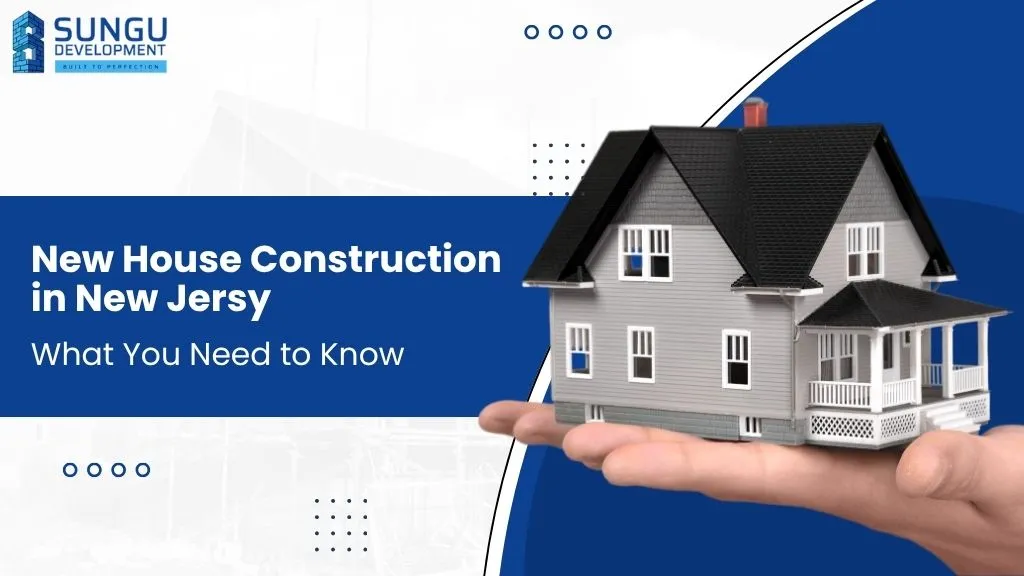
Building a new house in new jersey is exciting—but the Garden State has unique considerations that affect budget, schedule, and approvals. From township-by-township zoning to flood-plain and coastal constraints, here’s a practical, homeowner-friendly guide to planning, permitting, and delivering a successful build.
Why NJ Is Different
- Local zoning varies widely. Lot coverage, height, setbacks, and accessory structures can change from one township to the next.
- Flood & coastal factors. Shore towns and river communities often require elevated foundations and special reviews.
- Older utilities and infill sites. Many projects are teardowns or infill lots that need careful sitework, utility upgrades, or environmental due diligence.
- Seasonal weather. Freeze–thaw cycles and nor’easters can affect excavation, concrete, and roofing schedules.
Step 1: Budget Planning for New Construction in NJ
Key cost drivers
- Sitework & utilities: Tree removal, rock excavation (common in North/Central NJ), stormwater management, sewer/water taps or well/septic, and utility trenching.
- Foundation type: Slab, crawlspace, or basement (common in NJ)—plus waterproofing and drainage.
- Design complexity: Rooflines, beams for open-concept plans, window specs, and exterior materials.
- Permits, reviews, and inspections: Plan review timelines vary by municipality; build in float.
- Finish level & allowances: Cabinets, tile, flooring, lighting, appliances—lock these early to avoid change orders.
Pro tip: Carry a 10–20% contingency (closer to 20% for teardowns, older neighborhoods, or coastal/flood-zone lots).
Step 2: Land & Due Diligence
- Zoning check: Verify setbacks, height, lot coverage, driveway/curb cut, and any historic district rules.
- Survey & soils: Order a boundary & topographic survey and a geotechnical/perc test where septic is likely.
- Environmental review: Screen for wetlands, streams, or coastal constraints; confirm whether the lot sits in a special flood hazard area that could require elevation or additional engineering.
- Utility availability: Confirm gas/electric providers, sewer vs septic, water main size/pressure, and pole/transformer capacity for EVs or heat pumps.
- Neighborhood fit: Appraisal comps, school district, and future taxes influence resale and financing.
Step 3: Design, Team, and Delivery Method
- Architect + structural engineer for plans that fit NJ climate and township expectations.
- General contractor or design-build for single-point accountability.
- Selections calendar: Windows/doors, roofing, siding, HVAC type, plumbing/lighting packages—choose early to protect lead times.
- Energy strategy: Target an efficient envelope, right-sized HVAC (load calculations), and air sealing targets for comfort and lower bills.
Step 4: Permitting & Inspections (What to Expect)
While each town has its own process, most NJ projects follow a similar path:
- Zoning review/approval (confirm your plan meets local by-laws before building review).
- Building permit submittal with architectural, structural, energy, and site plans.
- Trade permits for electrical, plumbing, mechanical, and sometimes fire.
- Key inspections: footings/foundation, framing/strapping, rough-in MEP, insulation, and finals before the Certificate of Occupancy (CO).
Tip: Ask your builder for a written permit matrix and inspection schedule so you know who calls which inspection and when.
Step 5: Foundations, Framing & “Dry-In”
- Foundation: Footings, walls/slab, waterproofing, drainage, and backfill—critical for basements common in NJ.
- Framing: Floors, walls, roof structure; sheathing and structural strapping per wind/seismic requirements.
- Dry-in: Roofing underlayment and shingles/metal, windows/doors with proper flashing, and housewrap—once weather-tight, interior work starts.
Step 6: Mechanical, Electrical & Plumbing (MEP)
- Plumbing rough: Water/sewer runs (or well/septic connections), tub/shower pans, venting.
- Electrical rough: Panel location, circuits, low-voltage for data/security, EV-charger conduit.
- HVAC rough: Duct design (supply/return), bath/kitchen exhausts, and load-based equipment sizing.
- Energy & air sealing: Insulation (batts, blown-in, spray foam) and blower-door targets for a tight, comfortable home.
Step 7: Interior & Exterior Finishes
- Exterior: Siding/stucco/brick, trim, gutters, and exterior lighting.
- Interior: Drywall, paint, cabinets, countertops, flooring, tile, plumbing/lighting fixtures, appliances.
- Site & landscaping: Driveway/sidewalks, grading for drainage, plantings/irrigation, fencing.
Timeline Snapshot for NJ New Builds (Typical)
- Design & permitting: 2–4+ months (longer with variances/coastal or flood reviews)
- Sitework & foundation: 1–2 months
- Framing to dry-in: 1–2 months
- Rough-ins & insulation: 1–2 months
- Finishes & finals: 2–4 months
Overall: ~8–14+ months, depending on lot conditions, reviews, weather, and selections.
Financing, Insurance & Warranties
- Construction-to-perm loans: Funds released in draws tied to milestones; interest only during construction.
- Builder credentials: Choose a licensed/registered builder with recent references and a track record in your township.
- Warranties: Confirm the new home warranty coverage and claim process, plus manufacturer warranties for roofing, windows, and mechanicals.
- Insurance: Ensure builder’s risk and general liability are in place; inform your insurer ahead of move-in.
Energy, Comfort & Future-Proofing
- Envelope first: Better windows, continuous exterior insulation, meticulous air sealing, and balanced ventilation.
- Efficient systems: Consider heat pumps, heat-pump water heaters, and ENERGY STAR appliances.
- Electric-ready: Pre-wire for EV charging, solar-ready conduit, and a panel with spare capacity.
- Resilience: Sump pump with battery backup, whole-house surge protection, and optional standby generator—useful during coastal storms.
NJ-Specific Tips to Save Time & Money
- Talk to the zoning officer early. A 15-minute chat can prevent months of redesign.
- Lock selections before permitting. Changing windows, layout, or HVAC later can trigger re-reviews.
- Photo-document rough-ins. Shoot walls/ceilings before drywall for future maintenance.
- Order long-lead items up front. Custom windows/doors and specialty tile can drive your critical path.
- Plan for winter. If you’re pouring concrete or roofing late fall–winter, build in weather contingencies.

